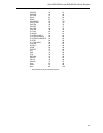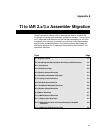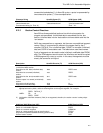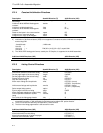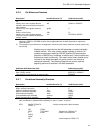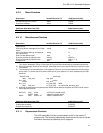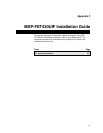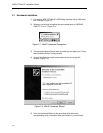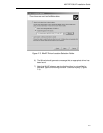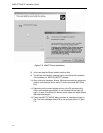
TI to IAR 2.x/3.x Assembler Migration
E-7
E.2.9 Macro Directives
Description Asm430 Directive (TI) A430 Directive (IAR)
Define a macro .macro MACRO
Exit prematurely from a macro .mexit EXITM
End macro definition .endm ENDM
Additional A430 Directives (IAR) A430 Directive (IAR)
Create symbol, local to a macro LOCAL 1)
1) In Asm430 local symbols are suffixed by a question mark (?).
E.2.10 Miscellaneous Directives
Description Asm430 Directive (TI) A430 Directive (IAR)
Send user-defined error messages to the
output device
.emsg #error
Send user-defined messages to the output
device
.mmsg #message 1)
Send user-defined warning messages to
the output device
.wmsg 2)
Define a load address label .label 3)
Directive produced by absolute lister .setsect ASEG 4)
Directive produced by absolute lister .setsym EQU or = 4)
Program end .end END
1) The syntax of the #message directive is: #message “<string>”
This causes ‘#message <string>’ to be output to the project build window during assemble/compile time.
2) Warning messages cannot be user-defined. #message may be used, but the warning counter will not be
incremented.
3) The concept of load-time addresses is not supported. Run-time and load-time addresses are assumed to
be the same. To achieve the same effect, labels can be given absolute (run-time) addresses by the EQU
directives.
; Asm430 code ; A430 code
.label load_start load_start:
Run_start: <code>
<code> load_end:
Run_end: run_start:EQU 240H
.label load_end run_end: EQU run_start+load_end-load_start
4) Although not produced by the absolute lister ASEG defines absolute segments and EQU can be used to
define absolute symbols.
MYFLAG EQU 23EH ; MYFLAG is located at 23E
ASEG 240H ; Absolute segment at 240
MAIN: MOV #23CH, SP ; MAIN is located at 240
...
Additional A430 Directives (IAR) A430 Directive (IAR)
Set the default base of constants RADIX
Enable case sensitivity CASEON
Disable case sensitivity CASEOFF
E.2.11 Preprocessor Directives
The A430 assembler includes a preprocessor similar to that used in C
programming. The following preprocessor directives can be used in include
files which are shared by assembly and C programs.



